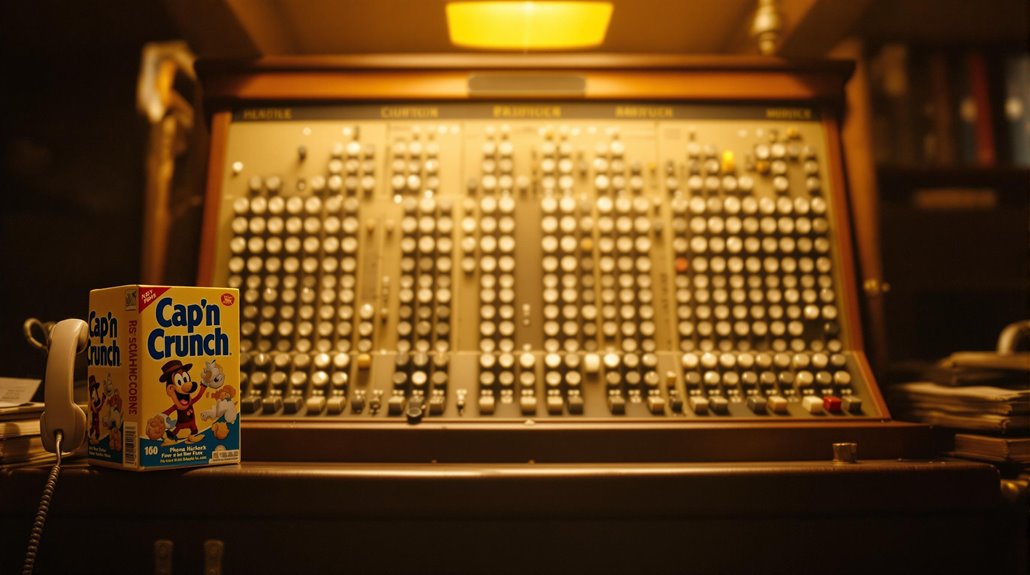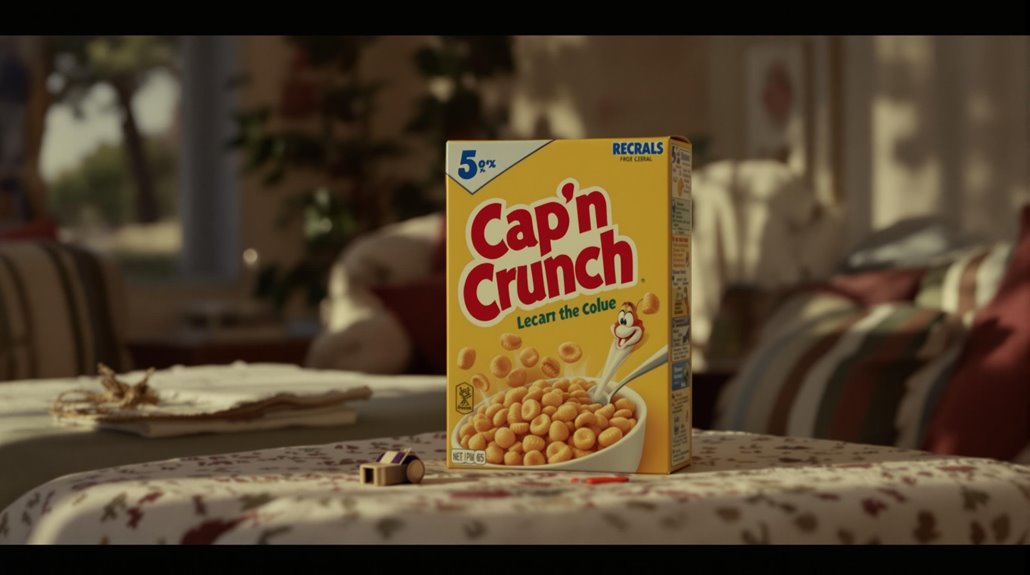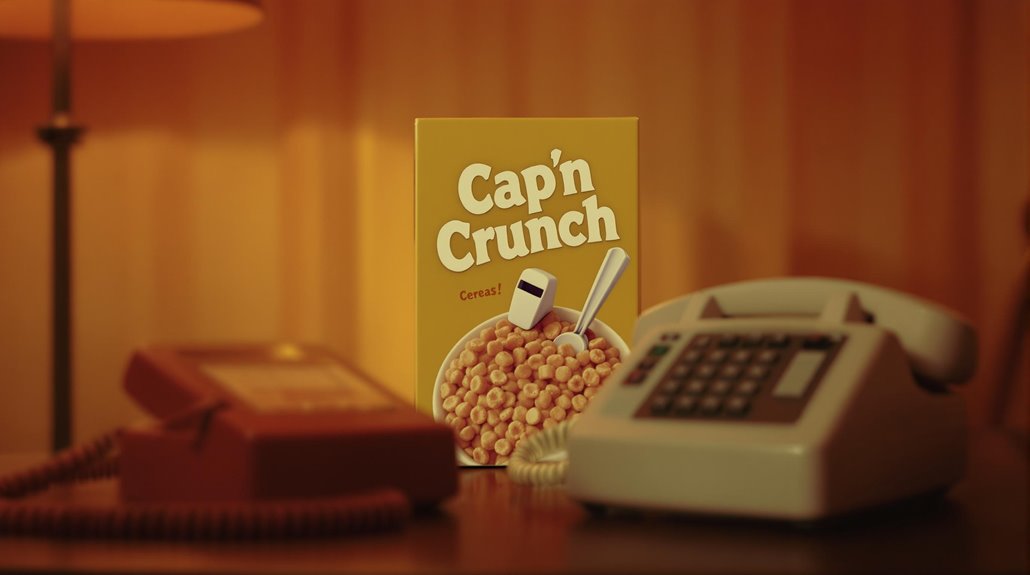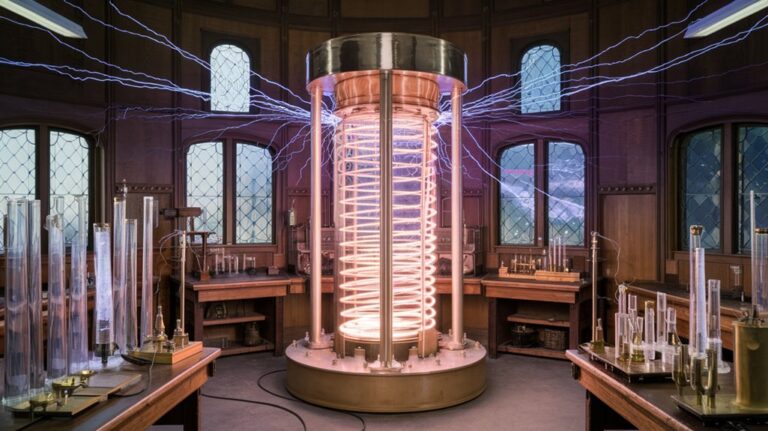Cap’n Crunch’s Whistle: How It Led to Phone Hacking
Like a butterfly's wing triggering a tornado, a small plastic whistle from a cereal box sparked a technological revolution. You've probably never imagined that a children's toy could shake the foundations of America's telecommunications giant, AT&T. Yet in the late 1960s, that's exactly what happened when phone hackers discovered the whistle's perfect 2600 Hz tone. What followed wasn't just about free phone calls—it launched a movement that would reshape how we think about technology and security.
The Accidental Discovery of a Cereal Box Toy

In the late 1960s, Quaker Oats Company released a small plastic whistle as a promotional toy in Cap'n Crunch cereal boxes.
This colorful novelty item, designed to mimic the boatswain whistles used by sailing officials, was part of a cereal marketing campaign to boost sales and appeal to young customers.
What started as a simple childhood nostalgia piece, however, would soon reveal an unexpected capability.
The whistle produced a precise 2600 Hz tone that perfectly matched AT&T's long-distance trunk line frequency.
While children were happily blowing their breakfast cereal prizes, phone phreakers discovered that this innocent toy could actually signal an available trunk line in the telephone system.
This accidental feature transformed a simple cereal box premium into an unlikely tool for exploring telecommunications networks.
Their discoveries led to the development of blue box devices that could replicate these tones more reliably.
Tech pioneer John Draper leveraged this discovery to become one of phreaking's most influential figures.
John Draper: The Man Behind Captain Crunch
John Draper, nicknamed "Captain Crunch" after the famous cereal box whistle, emerged as one of the most influential figures in early phone phreaking and computer programming.
Draper's innovations began early in his life when he built a home radio station from discarded military parts. After serving in the Air Force, where he ran a pirate radio station, he discovered the power of the Cap'n Crunch whistle's 2600 Hz tone through his friendship with blind phone phreak Denny Teresi. His discovery that the whistle could produce 2600 Hertz tones revolutionized phone phreaking by enabling free long-distance calls. He found that by simply gluing the third hole of the whistle, it could generate the perfect frequency for manipulating the phone system.
Despite legal troubles and two prison sentences, Draper's early influences in technology never wavered. He created the groundbreaking EasyWriter word processor while incarcerated, which later became IBM's official word processor.
His legacy extends beyond phone phreaking – he's inspired tech pioneers like Steve Jobs and Steve Wozniak, while continuing to innovate in software development and cybersecurity throughout his career.
The Science of AT&T's Network Vulnerability
While AT&T boasted one of the world's most advanced phone networks in the 1960s, its reliance on in-band signaling created a massive security vulnerability. The network's entire control system depended on a simple 2600 Hz tone transmitted through the same channels as voice communications, making signal manipulation surprisingly easy. Phone buttons were merely interfaces that generated specific tones for the system.
The heart of this weakness lay in the trunk line vulnerabilities. You could access the network's operator mode by playing specific tones, giving you control over long-distance routing and switching systems worth billions. This type of vulnerability persists today, as evidenced by hackers gaining access to lawful intercept backdoors in recent attacks.
What's remarkable is that something as simple as a plastic whistle from a cereal box could compromise AT&T's infrastructure. This fundamental flaw in the network's design showed how security through obscurity wasn't enough to protect critical communications systems, eventually forcing AT&T to develop more secure out-of-band signaling methods.
Phone Phreaking Goes Mainstream
The underground world of phone phreaking burst into public consciousness in 1971 when Esquire magazine published "Secrets of the Little Blue Box."
This groundbreaking article exposed millions of readers to the technical wizardry of phone phreaks, including the legendary John "Captain Crunch" Draper and his cereal box whistle exploits. Blue box devices became popular tools after Draper engineered them to replicate useful phone tones.
The article's impact sparked a revolution in the underground culture of phreaking techniques, leading to widespread sharing of knowledge through newsletters like TAP and secret phone conferences. As telecommunications evolved, phreakers discovered that the 2600 Hz tone was crucial for manipulating long-distance calling systems.
You'll find this period marked by significant technological evolution and community growth.
- Underground newsletters shared detailed phreaking methods and tools
- Phone conferences connected phreakers through loop lines
- Specialized jargon and code words developed among community members
- Regular meetups and gatherings strengthened phreaker networks
Legal Battles and Security Wake-Up Call

As phone phreaking spread across America, law enforcement and telecommunications companies launched an aggressive crackdown that would reshape the industry's approach to security.
The legal ramifications were severe – you could face up to 20 years in prison and $250,000 in fines for wire fraud.
AT&T's estimated annual losses of $30 million pushed them to take decisive action. Joe Engressia became a network service troubleshooter for Mountain Bell after his phreaking days. The arrest of John Draper in 1971 signaled that authorities wouldn't tolerate phone system exploitation.
The industry responded with major security enhancements. AT&T Labs studied phreaking techniques and implemented out-of-band signaling in the 1980s.
They developed sophisticated fraud detection systems and began monitoring suspicious calling patterns. Modern phone security now includes features to detect unusual data usage as a sign of potential hacking.
These changes didn't just protect phone networks – they sparked a broader revolution in cybersecurity awareness, influencing everything from corporate policies to federal legislation like the 1986 Computer Fraud and Abuse Act.
From Whistles to Digital Revolution
Inside a seemingly innocent Cap'n Crunch cereal box, a plastic toy whistle sparked one of technology's most transformative revolutions. The digital implications of this discovery reached far beyond simple phone hacking, laying the foundation for modern computer culture. John Draper discovered that the whistle produced a perfect 2600Hz tone that could manipulate AT&T's telephone system.
You'll find the cultural impact of phone phreaking reflected in today's hacker ethos and cybersecurity practices.
- Steve Wozniak and Steve Jobs turned phreaking knowledge into their first business venture
- The phreaking community fostered experimentation and technological exploration
- Early phone system vulnerabilities exposed the need for better security measures
- These discoveries influenced the development of Apple Computer and Silicon Valley culture
When you trace today's digital revolution back to its roots, you'll find that a simple cereal box whistle helped shape the technological landscape we now take for granted.











